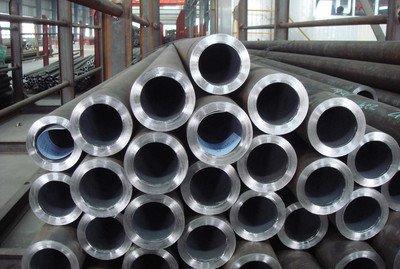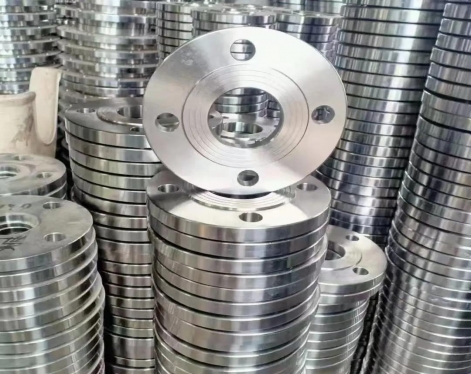Steel pipes (such as seamless pipes or welded steel tubes) are used to convey fluids and powdery solids, exchange heat, manufacture mechanical parts and containers, and are also an economical steel.
Chemical Cleaning Requirements
1. General requirements for chemical cleaning
(1) Remove the oil, protective layer and other attachments on the surface of the steel pipe;
(2) Remove the scale and serious rust on the surface of the steel pipe.
2. The chemical cleaning solution must be tested regularly, and its chemical composition should be adjusted in time according to the test data.
3. The rinsing tank for washing with clean water should have an overflow port to discharge the grease on the water surface, and there must be sufficient water flow.
4. Steel pipes cannot use the same pickling tank as pipes of other materials.
5. Disposal of unusable chemical cleaning solutions must comply with environmental protection regulations.
The process of chemical cleaning
1. Chemical degreasing
(1) The chemical degreasing method should be soaked in the tank.
(2) When soaking in the tank, pay attention to the installation and hanging direction of the cleaning parts to avoid air remaining in the tube.
(3) During the soaking process, the steel pipe should be turned so that the solution in the cavity is continuously replaced.
(4) Chemical degreasing until the surface of the steel pipe is completely wetted by water.
2. Rinse with hot water
Soak the steel pipe in a water tank with a water temperature of 80°C for 3 to 5 minutes, and the water should flow and renew.
3. Pickling
(1) pickling should be soaked in the tank.
(2) When soaking in the tank, pay attention to the installation and hanging direction of the cleaning parts to avoid air remaining in the tube.
(3) During the soaking process, the steel pipe should be turned so that the solution in the cavity is continuously replaced.
(4) When the rust or scale on the surface of the steel pipe is loose and easy to fall off after cleaning, the pickling of the steel pipe is over.
4. Rinse with water
The water flow should have an appropriate impact force. It is advisable to use the mixed flow of compressed air and water to spray the surface of the pipe to remove the surface dirt after pickling, and then put it into the water rinsing tank for rinsing.
5. Passivation
(1) The passivation should be soaked in the tank.
(2) When soaking in the tank, pay attention to the installation and hanging direction of the cleaning parts to avoid air remaining in the tube.
(3) During the soaking process, the steel pipe should be turned so that the solution in the cavity is continuously replaced.
6. Rinse with hot water
(1) The water temperature is 80°C. Rinse the steel pipe with hot water of about C until it is washed clean.
(2) After the passivation treatment of the steel pipe, if it does not affect the subsequent process or the use of the steel pipe, hot water washing can be omitted.
7. Dry
Dry the steel pipe with clean compressed air.
8. Maintenance
(1) After the chemically cleaned steel pipes pass the inspection, in order to ensure the cleaning quality, the surface of the steel pipes should be treated in a timely manner.
(2) Pipe ends and branch pipe openings should be sealed with appropriate covers, plates and other materials, and stored in a clean and dry place.
(3) Steel pipes should be protected during transportation, and the surface should not be damaged.

Acceptance requirements
1. The steel pipe should be off-white after chemical cleaning.
2. Oil stains, scale, rust, loose matter, sand, garbage, etc. are not allowed on the surface of the steel pipe.
3. The outer surface of the steel pipe should be fully inspected. For the inspection of the inner surface, 1~3 pipes can be taken from each batch, and a white cloth can be passed through the inside of the pipe to check whether there is scale, sand, garbage, etc. If there is one unqualified, double sampling should be taken for re-inspection, if there is still one unqualified, all steel pipes should be inspected.
4. After chemical cleaning, the acidity and alkalinity of the surface of the steel pipe can be tested with PH extensive test paper, and the pH value of the steel pipe should be in the range of 7~10
5. The anti-rust oil on the inner surface of the steel pipe and the anti-rust paint on the outer surface should be evenly distributed and meet the requirements of the factory.
6. Steel pipes that fail the inspection must be reprocessed.
Chemical Cleaning Requirements
1. General requirements for chemical cleaning
(1) Remove the oil, protective layer and other attachments on the surface of the steel pipe;
(2) Remove the scale and serious rust on the surface of the steel pipe.
2. The chemical cleaning solution must be tested regularly, and its chemical composition should be adjusted in time according to the test data.
3. The rinsing tank for washing with clean water should have an overflow port to discharge the grease on the water surface, and there must be sufficient water flow.
4. Steel pipes cannot use the same pickling tank as pipes of other materials.
5. Disposal of unusable chemical cleaning solutions must comply with environmental protection regulations.
The process of chemical cleaning
1. Chemical degreasing
(1) The chemical degreasing method should be soaked in the tank.
(2) When soaking in the tank, pay attention to the installation and hanging direction of the cleaning parts to avoid air remaining in the tube.
(3) During the soaking process, the steel pipe should be turned so that the solution in the cavity is continuously replaced.
(4) Chemical degreasing until the surface of the steel pipe is completely wetted by water.
2. Rinse with hot water
Soak the steel pipe in a water tank with a water temperature of 80°C for 3 to 5 minutes, and the water should flow and renew.
3. Pickling
(1) pickling should be soaked in the tank.
(2) When soaking in the tank, pay attention to the installation and hanging direction of the cleaning parts to avoid air remaining in the tube.
(3) During the soaking process, the steel pipe should be turned so that the solution in the cavity is continuously replaced.
(4) When the rust or scale on the surface of the steel pipe is loose and easy to fall off after cleaning, the pickling of the steel pipe is over.
4. Rinse with water
The water flow should have an appropriate impact force. It is advisable to use the mixed flow of compressed air and water to spray the surface of the pipe to remove the surface dirt after pickling, and then put it into the water rinsing tank for rinsing.
5. Passivation
(1) The passivation should be soaked in the tank.
(2) When soaking in the tank, pay attention to the installation and hanging direction of the cleaning parts to avoid air remaining in the tube.
(3) During the soaking process, the steel pipe should be turned so that the solution in the cavity is continuously replaced.
6. Rinse with hot water
(1) The water temperature is 80°C. Rinse the steel pipe with hot water of about C until it is washed clean.
(2) After the passivation treatment of the steel pipe, if it does not affect the subsequent process or the use of the steel pipe, hot water washing can be omitted.
7. Dry
Dry the steel pipe with clean compressed air.
8. Maintenance
(1) After the chemically cleaned steel pipes pass the inspection, in order to ensure the cleaning quality, the surface of the steel pipes should be treated in a timely manner.
(2) Pipe ends and branch pipe openings should be sealed with appropriate covers, plates and other materials, and stored in a clean and dry place.
(3) Steel pipes should be protected during transportation, and the surface should not be damaged.

Acceptance requirements
1. The steel pipe should be off-white after chemical cleaning.
2. Oil stains, scale, rust, loose matter, sand, garbage, etc. are not allowed on the surface of the steel pipe.
3. The outer surface of the steel pipe should be fully inspected. For the inspection of the inner surface, 1~3 pipes can be taken from each batch, and a white cloth can be passed through the inside of the pipe to check whether there is scale, sand, garbage, etc. If there is one unqualified, double sampling should be taken for re-inspection, if there is still one unqualified, all steel pipes should be inspected.
4. After chemical cleaning, the acidity and alkalinity of the surface of the steel pipe can be tested with PH extensive test paper, and the pH value of the steel pipe should be in the range of 7~10
5. The anti-rust oil on the inner surface of the steel pipe and the anti-rust paint on the outer surface should be evenly distributed and meet the requirements of the factory.
6. Steel pipes that fail the inspection must be reprocessed.









